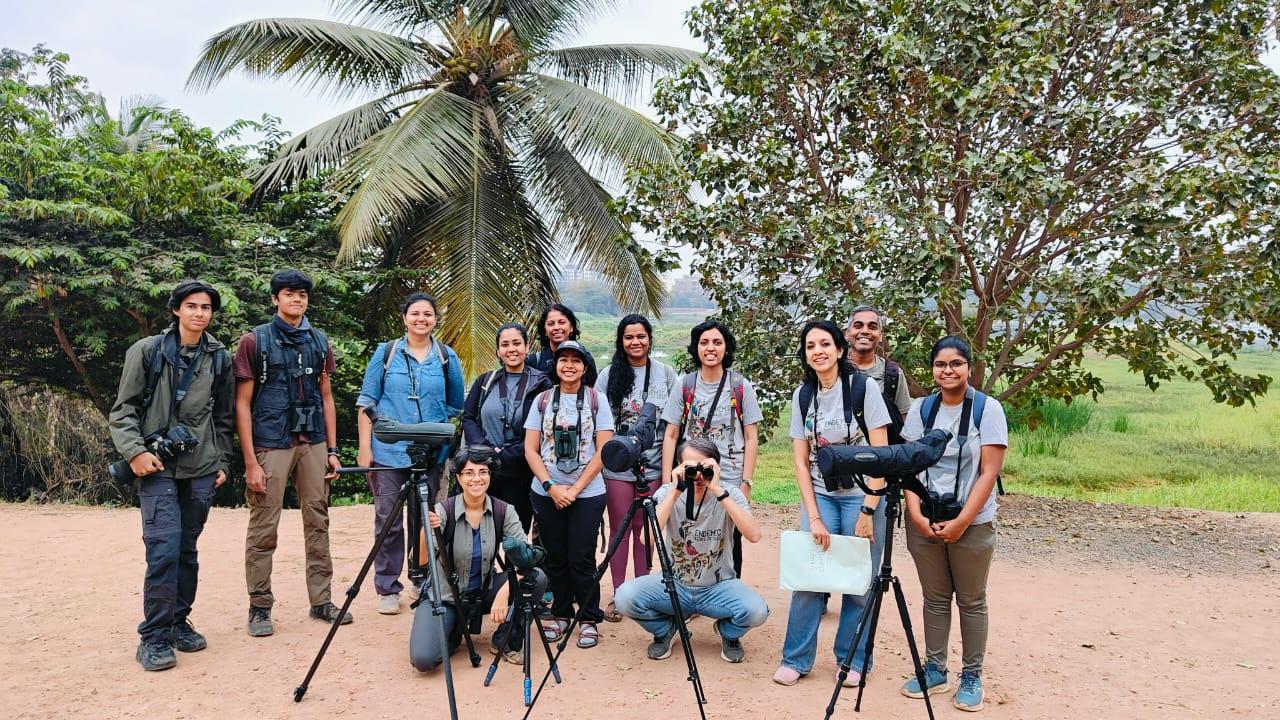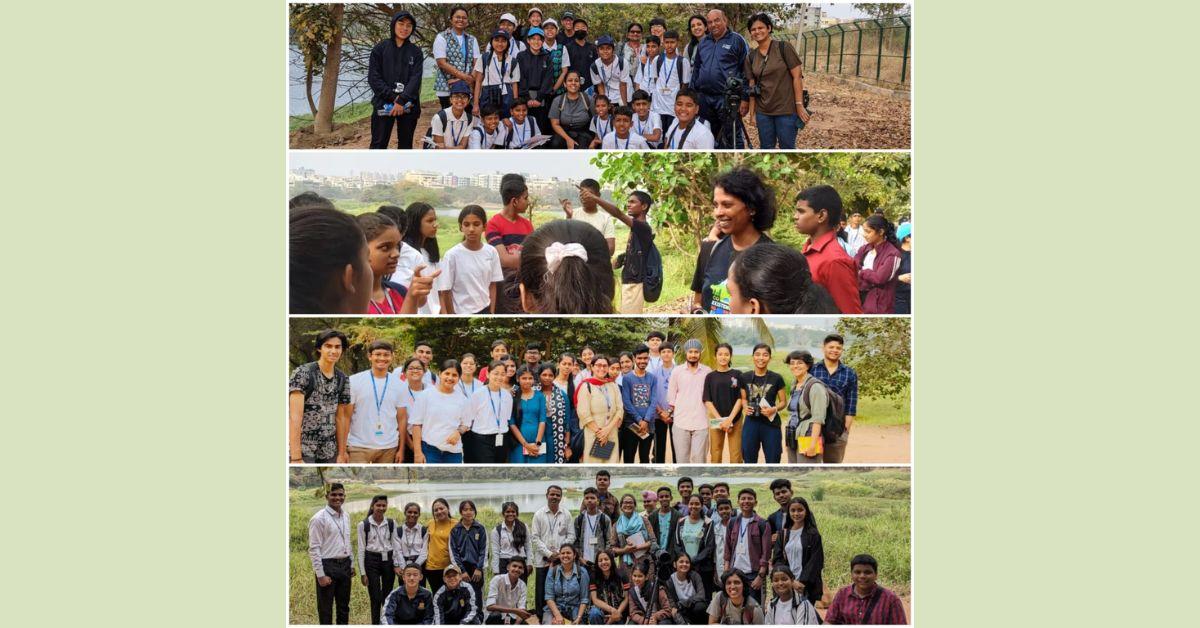On 25 February 2024, we had the opportunity to lead a group of 100 students aged 11-18 and 20 teachers from 20 schools across India on a bird walk. Our destination? Saul Kere in Bengaluru. The walk was organised as part of the Wipro Earthian Awards 2024.
We split into four groups and ventured into different corners of Saul Kere, eagerly observing and learning about the intricacies of bird behaviour, habitat, and more. Our participants ranged in age and expertise, creating a dynamic and engaging atmosphere for exploration.
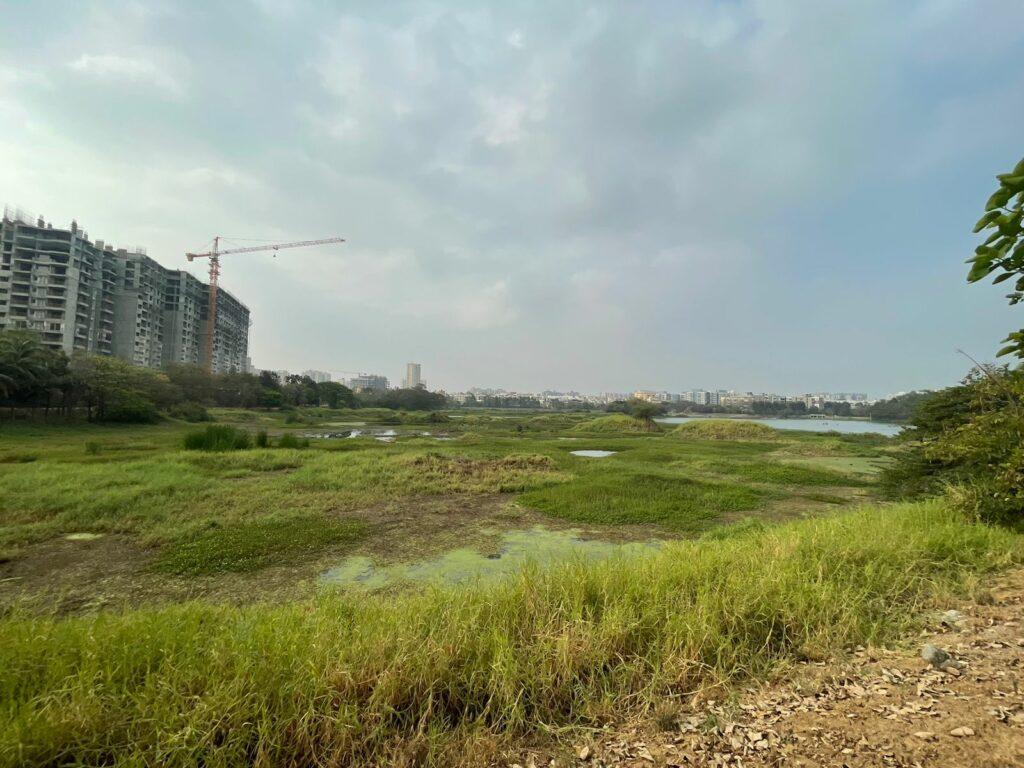
Bird Behaviour and Habitat
Our largest group consisted of 35 students aged 15-18 and their teachers, including a mix of experienced birders and first-timers. We learned about the historical context of water conservation in Bengaluru, tracing back to the initiatives of Kempegowda and the construction of tanks to store precious water resources.
As we walked further, we spotted many birds – Moorhens, Herons, Swamphens, Sandpipers, and even a migratory Garganey. When discussing the diets of these birds, we learned that not all birds that live around water eat fish. Observing birds’ physical features, such as their legs and beaks, provides clues about their diets and lifestyles. Birds that wade in water have long legs, while those with long, sharp beaks likely eat fish. We spotted a few endemic birds, including the White-cheeked Barbet that was busy exploring a nest hole, and a pair of Yellow-billed Babblers babbling away.
We also discussed some bird characteristics, such as why kites soar in bright sunlight and why female sunbirds are duller than males. Our attention then shifted to a fruiting ficus tree. We discussed the role of wasps in its pollination, a topic beautifully explored in the documentary ‘The Queen of Trees.’
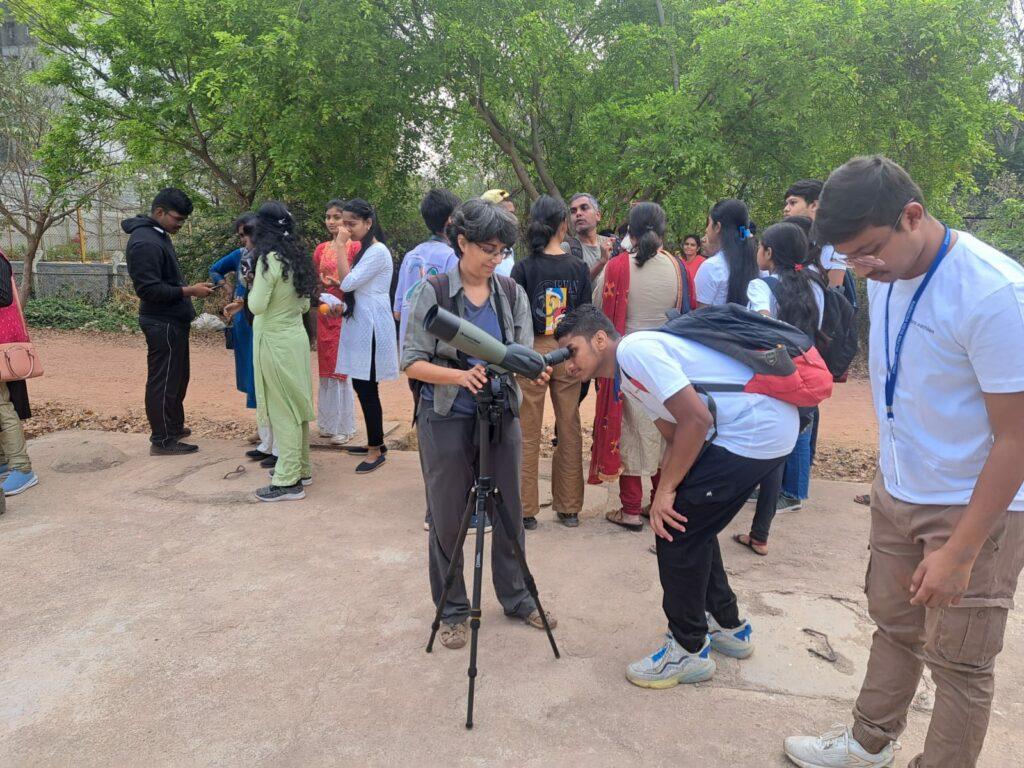
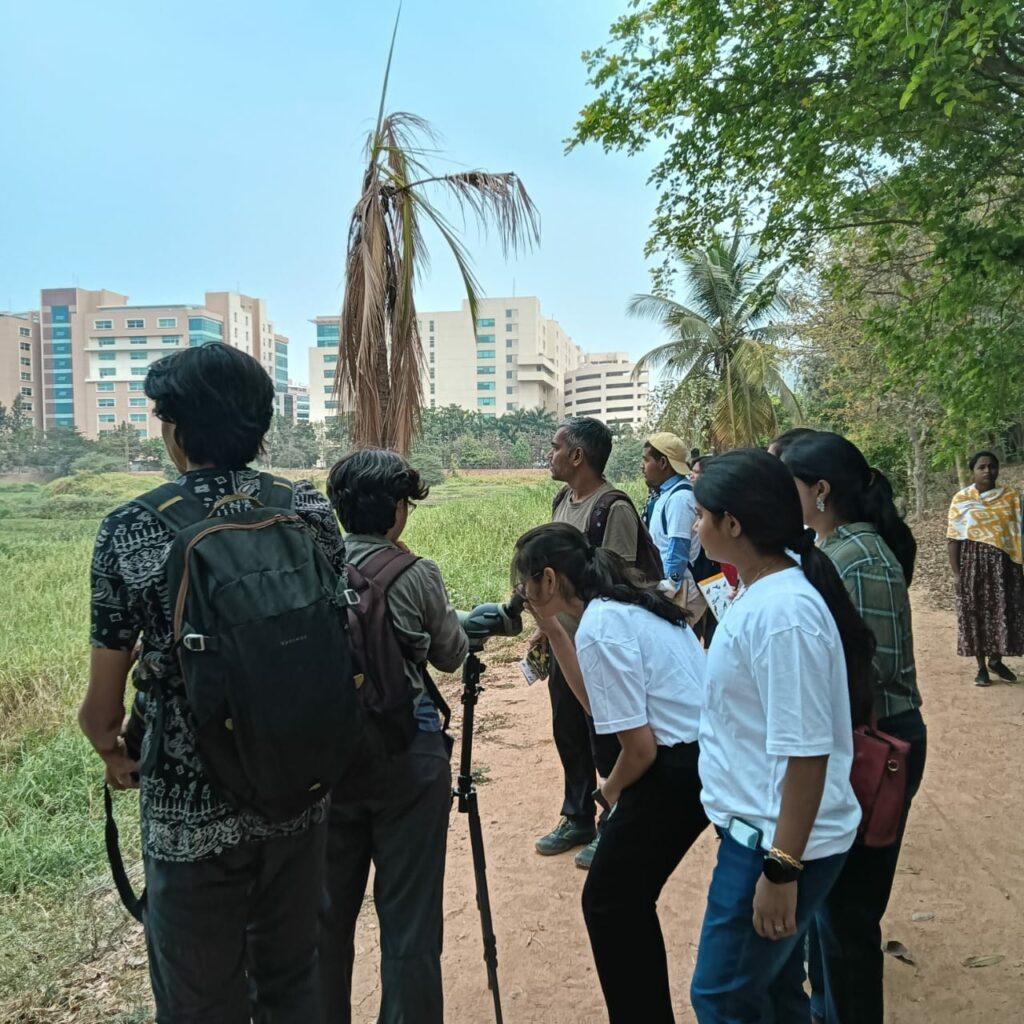
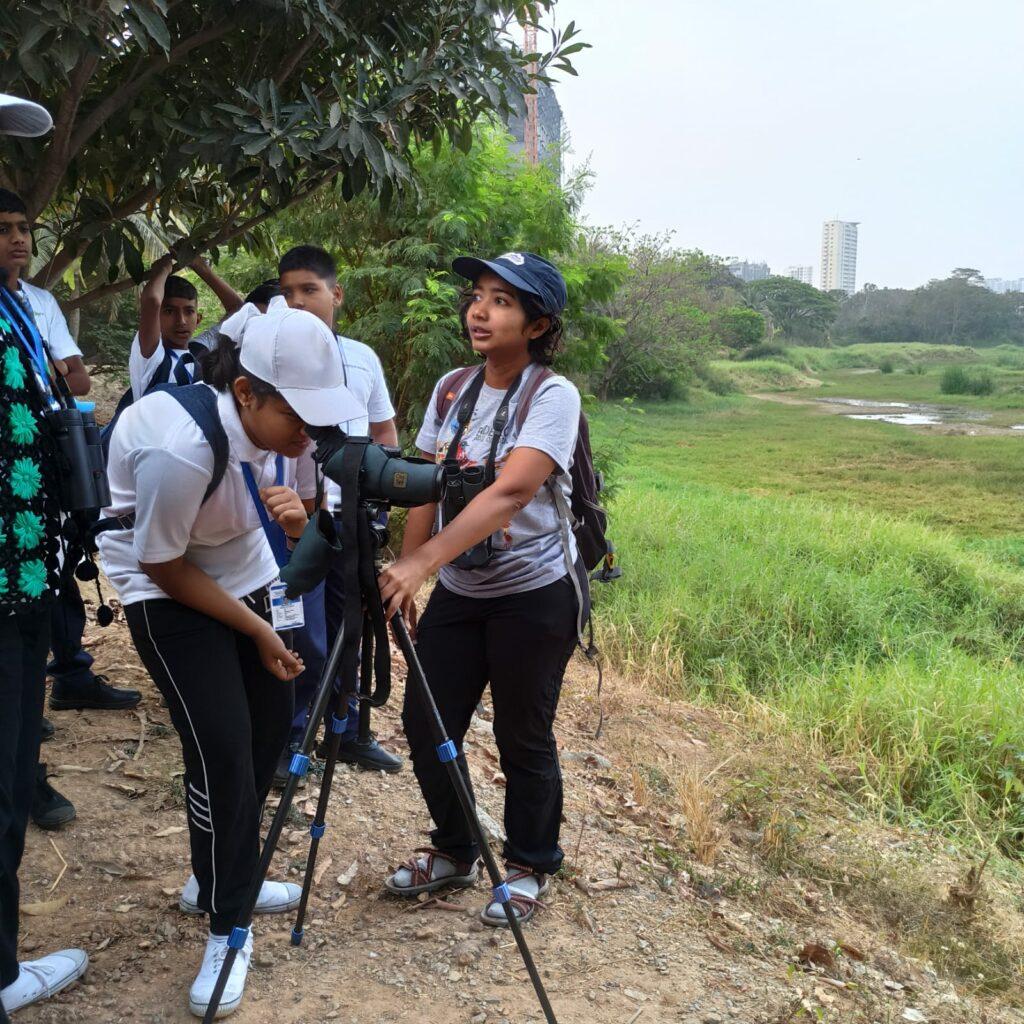
Going Beyond Birds
Our other group also had students aged 13-15 from diverse regions like Assam, Goa, Maharashtra, Nagaland, and Punjab. Our first encounter was with the elegant Purple Heron, spotted in a crouching posture. To enhance our understanding, we used the Early Bird flashcards, which allowed us to appreciate the heron’s beauty up close. We also shared regional bird names, noticing intriguing similarities across different parts of the country. For example, in Assamese, Marathi, and Hindi, the word for cormorant translated to ‘water crow’.
During our bird observations, we discovered the intricate nests of weaver ants and squirrels, which added excitement to our adventure. A cameo appearance by a mongoose provided an unexpected thrill, reminding us of the diverse wildlife that inhabits this area. Our fascination extended to the surrounding trees, particularly the fig and white silk cotton trees, which captured the group’s attention. We learned about the symbiotic relationship between fig trees and wasps, which helped us understand nature’s intricate connections.
To wrap up our adventure, we engaged in a few rounds of ‘fact or fiction,’ sparking lively discussions. Questions like, “Are there any birds without feathers?” and “Which other animals lay eggs?” fueled curiosity and encouraged the group to think critically about the natural world around them.
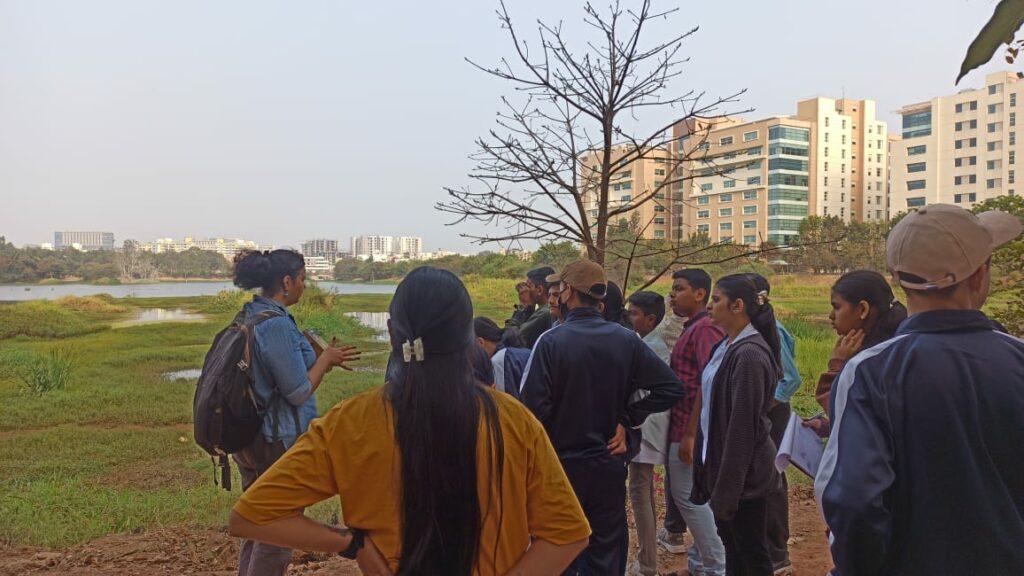
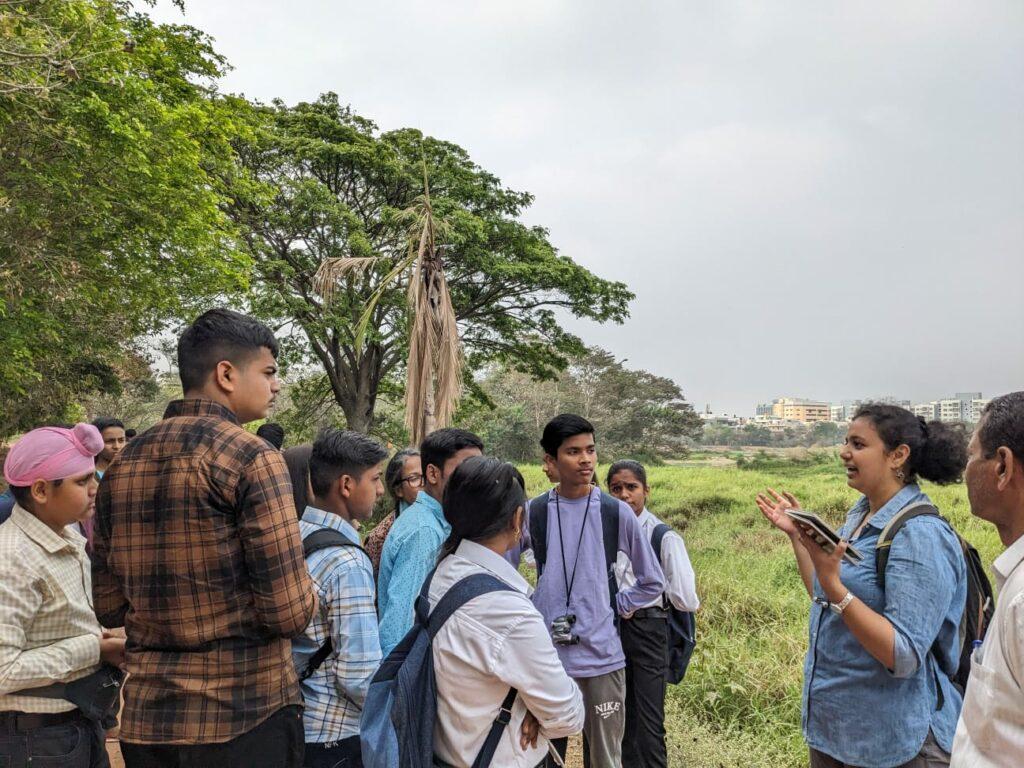
Learning Through Art
Another group of students aged 13-15 hailing from schools in Karnataka, Puducherry, Goa, and Kerala, had an artsy birding experience. The day started in front of a fruiting Cluster Fig tree, setting the stage for discussions on seed dispersal. Two schools in the group made guesses about larger birds like Hornbills playing a role in dispersing the large fruits of the Cluster Fig. This helped discuss the story of fig pollination and dispersal. We also discussed bird migration, prompted by the sighting of the Sandpiper.
Shifting our focus to the Common Moorhen, students had the unique opportunity to observe the bird perched on a stump through a spotting scope. Each school took on the task of sketching the bird, jotting down its appearance, behaviour, habitat, and diet and sharing their observations with the group. We then discussed the shapes of beaks and feet, and their respective uses, which deepened our understanding of bird anatomy. This engaging activity was repeated for two more species – the Purple Heron and Wood Sandpiper, allowing students to broaden their knowledge and observational skills.
The final task involved sketching the wetland and mapping the various bird species observed. We then took a short walk and spotted Sunbirds and Flowerpeckers on a Singapore Cherry tree, Cormorants roosting on trees on an island, Drongos enjoying a sip of water, and Grey-headed Swamphens going about their feeding routines. The discussion also covered the concept of a wetland ecosystem, which includes water, aquatic plants, reeds, and trees on the edges. We learned how different bird species use different parts of the wetland and have varying diets.
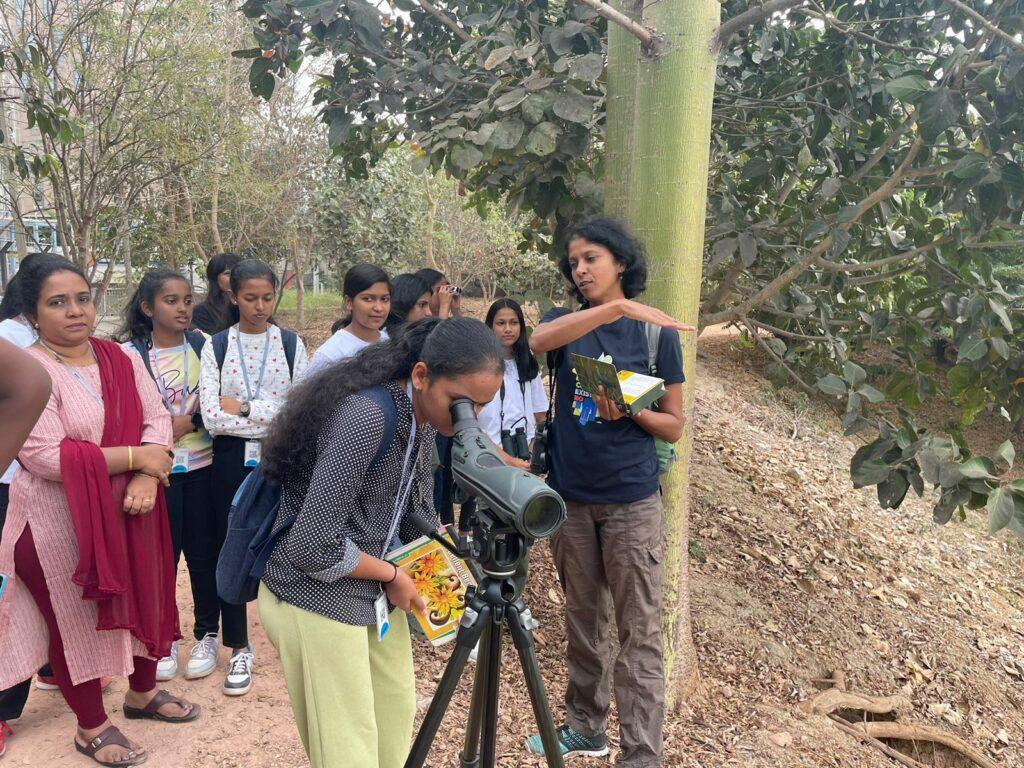
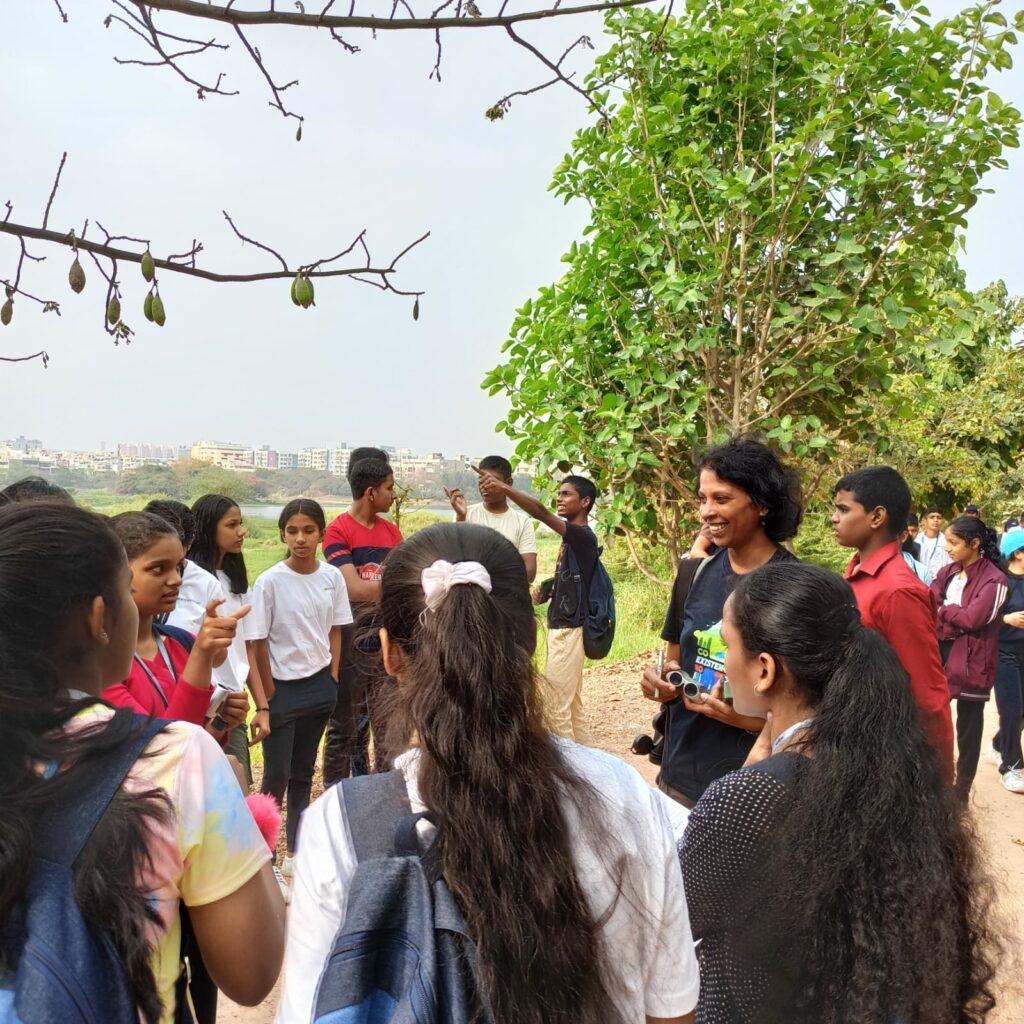
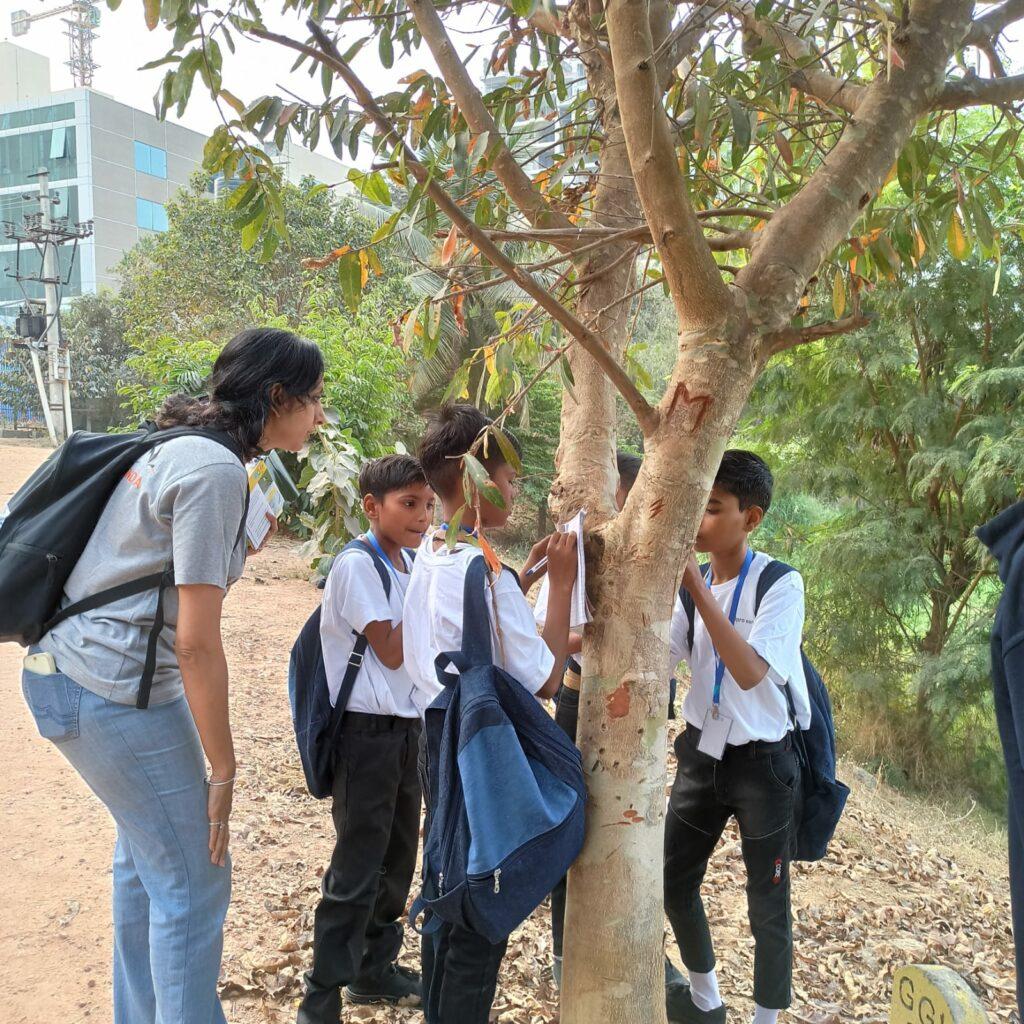
Having Fun With Birds
The last group had enthusiastic participants from Arunachal Pradesh, Kolkata, Rajasthan, and Uttar Pradesh. We started the day by learning how to become “invisible” to observe birds without disturbing them, and how to use binoculars effectively. We then observed various water birds such as the Glossy Ibis, Little Egret, Great Egret, Indian Pond-Heron, Purple Swamphen, and Eurasian Coot through a spotting scope. To make the experience more personal, learners gave these birds their own names. One participant coined the term “Duckcock” for the Swamphen, likening its appearance to a hen in water.
Other discussions revolved around the unique features of different bird species, such as the lobed feet of Coots compared to the webbed feet of Ducks. The group also engaged in a fun activity called Bird Bingo, where they searched for cues like colourful birds, birds with long legs, and mostly black birds. In the process, they discovered various bird feathers, providing an opportunity to discuss the functions and shapes of feathers.
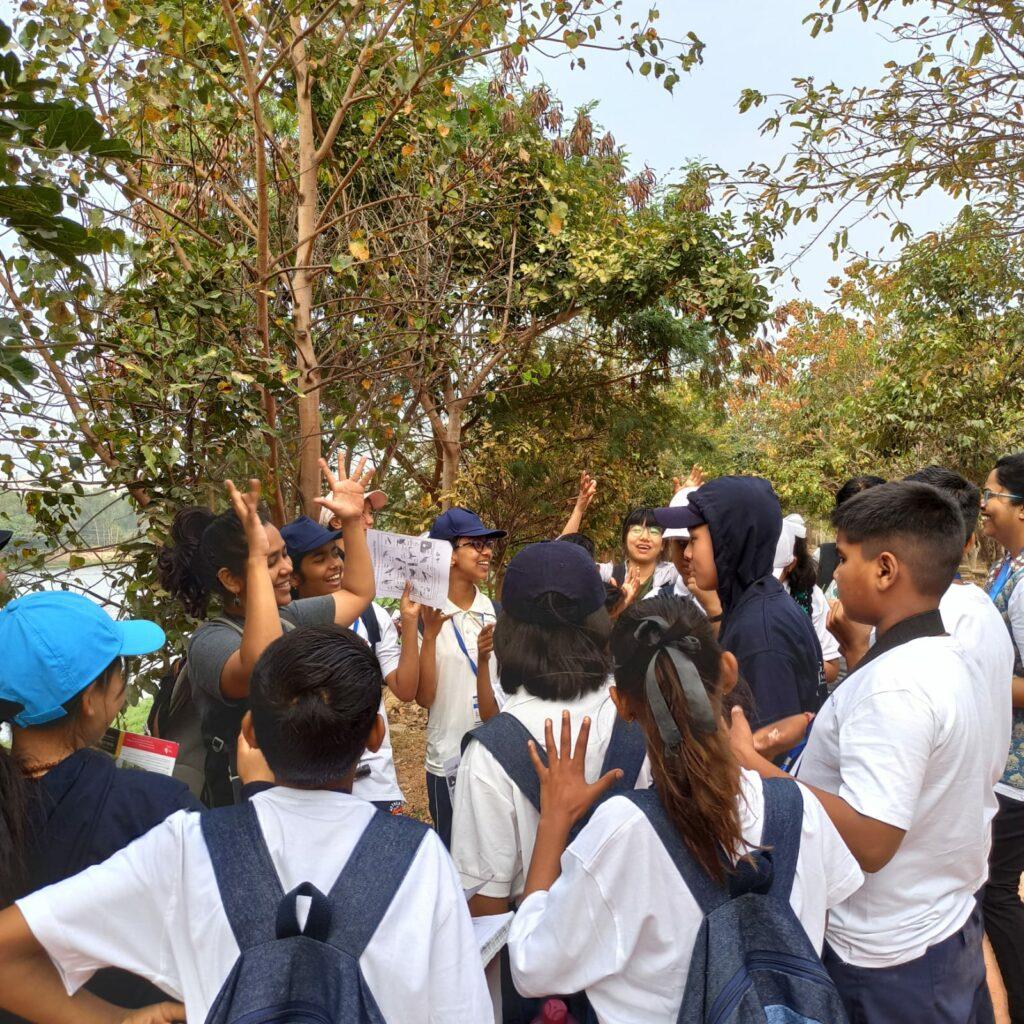
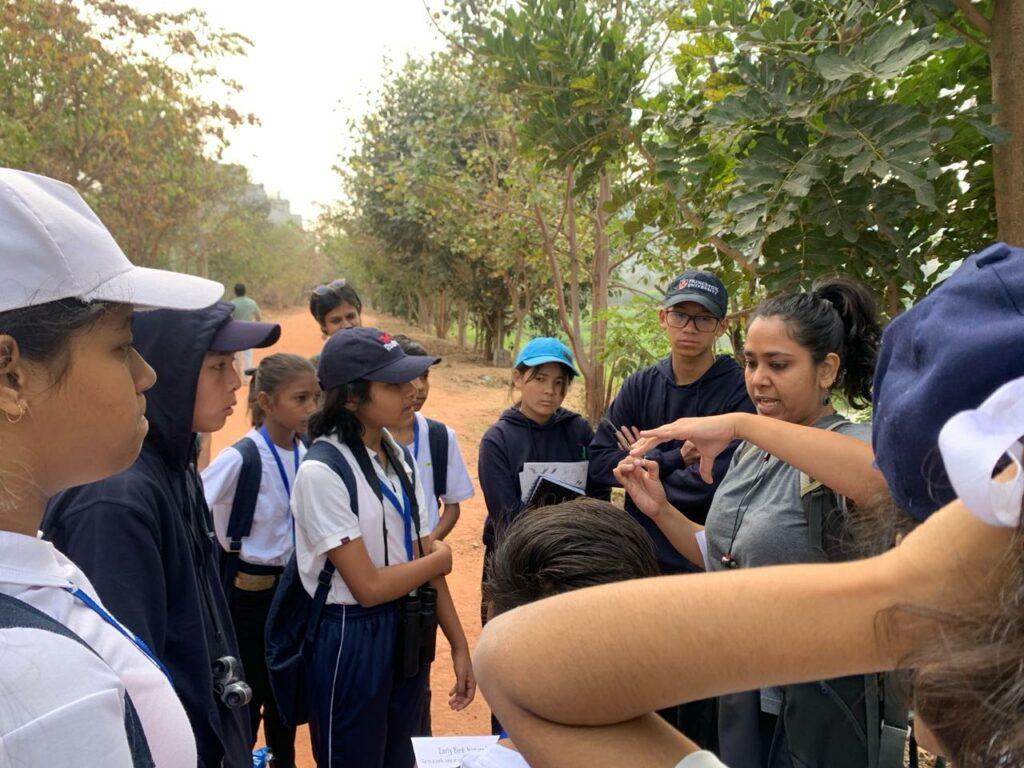
In Retrospect
The Wipro Earthian Walk served as a catalyst for awareness and education about birds and nature. Through hands-on exploration, lively discussions, and regional insights, participants gained an understanding of the biodiversity surrounding Saul Kere and beyond. Our observations extended beyond birds, exploring the symbiotic relationship between fig trees and wasps, the nesting habits of weaver ants and squirrels, and the diverse flora that thrives in wetland ecosystems.
Engaging activities sparked curiosity and creativity among participants. From sketching birds and mapping their habitats to playing “fact or fiction” and Bird Bingo games, each interaction fostered a deeper appreciation for the natural world. As we reflect on this experience, let us continue to nurture our connection with nature and inspire future generations to do the same.
Interested in sustainability education? Learn more about the Wipro Earthian programme.
Here are some sketches made by the walk participants.
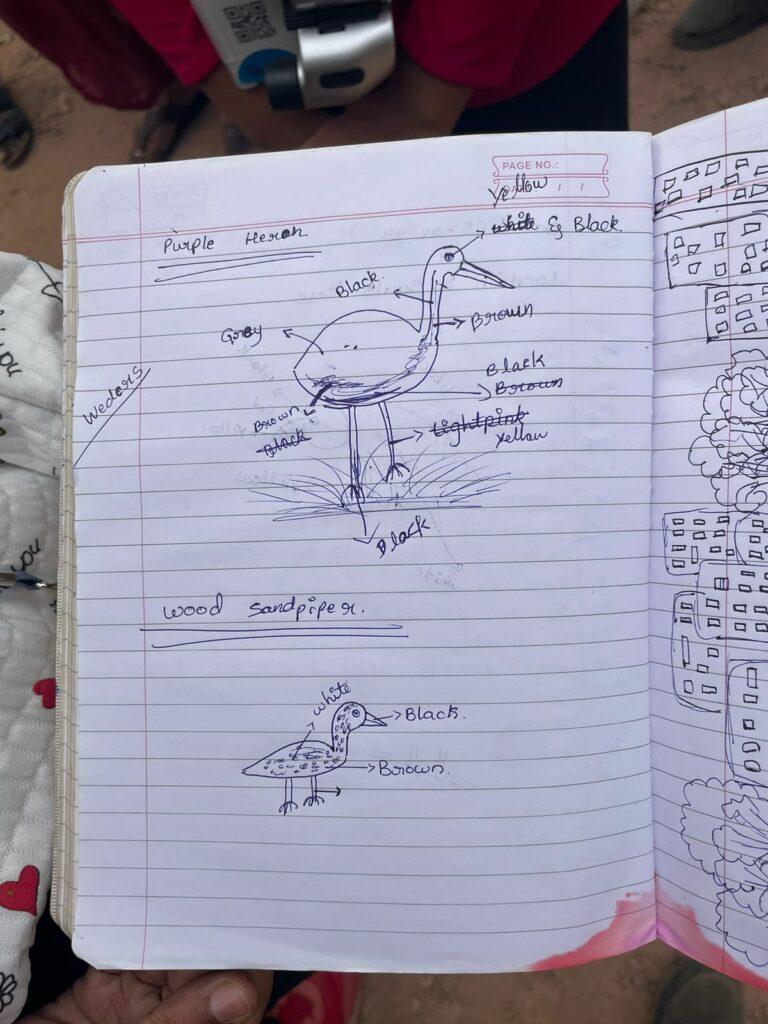
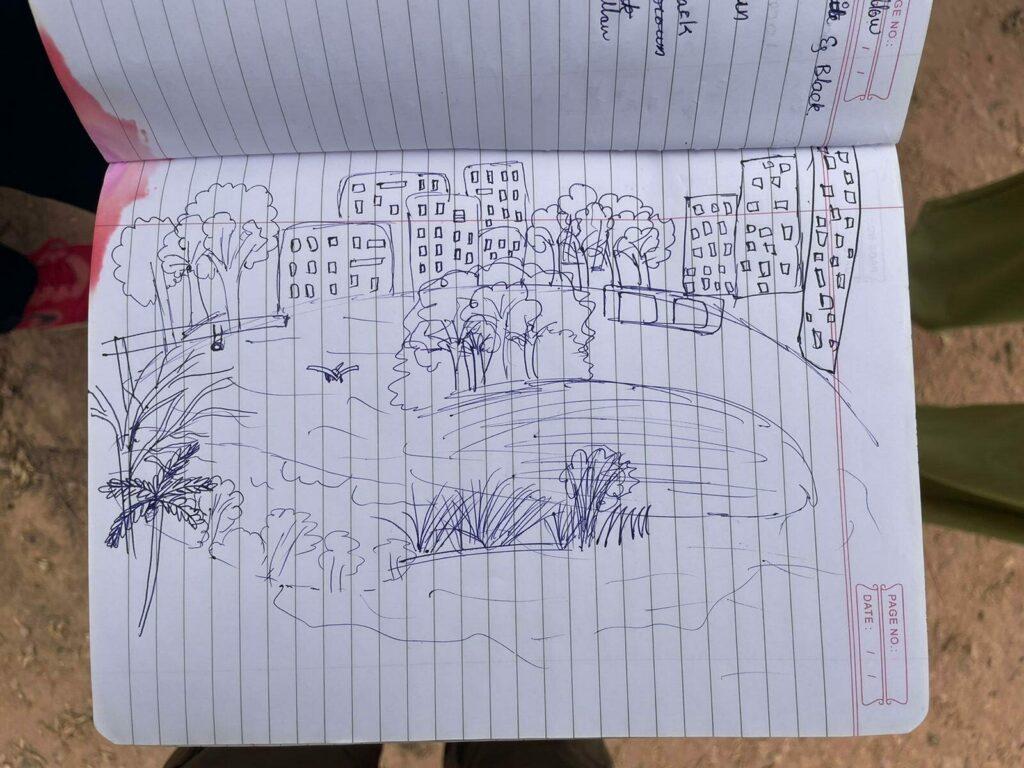
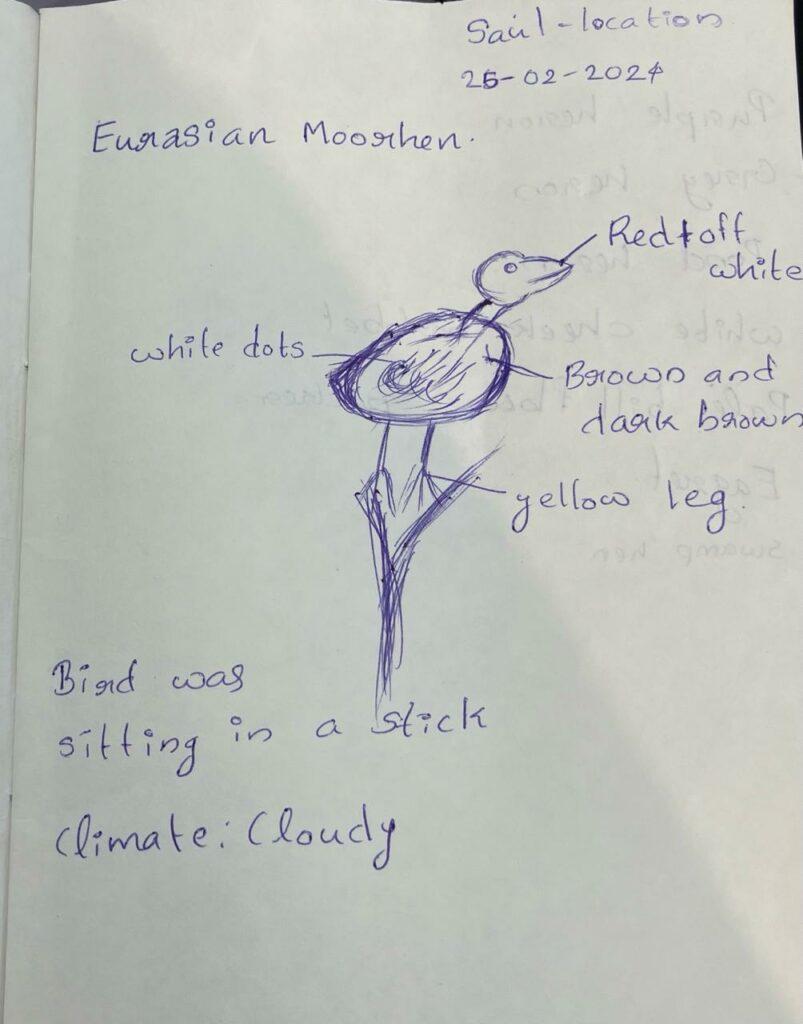
This walk wouldn’t have been possible without the help of our wonderful volunteers – Chandu, Komal, Anirudh, Rahul, Ramya, Ashish, Febin, and Shruti.
